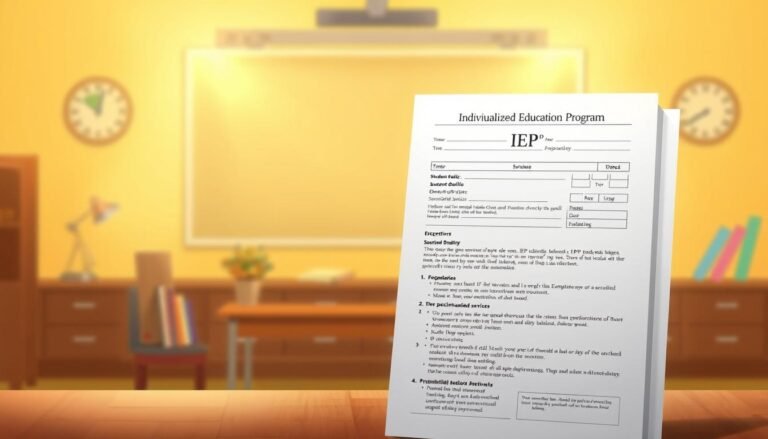
Myth vs. Reality: Debunking Common Misconceptions About Language-Based Learning Disabilities
Introduction
Language-based learning disabilities (LBLD) affect millions of individuals worldwide, yet significant misconceptions surround them. The phrase "Myth vs. Reality: Debunking Common Misconceptions About Language-Based Learning Disabilities" represents not only a quest for clarity but also a mission to empower those impacted by such challenges.
Often mistaken as mere laziness or lack of intelligence, these disabilities can manifest in various forms, leading to confusion and stigma for those who experience them. By understanding the realities behind LBLDs, we can reshape our approach to education, advocacy, and empathy for those affected. This article will explore common myths, clarify the realities, and offer actionable insights to encourage understanding and support for individuals with LBLDs.
Understanding Language-Based Learning Disabilities
What Are Language-Based Learning Disabilities?
Language-based learning disabilities encompass a range of difficulties related to reading, writing, and spoken language. They can significantly impact academic performance and communication skills, often resulting in frustration for both the individual and their educators or caregivers.
Types of Language-Based Learning Disabilities
The most prevalent types of LBLDs include:
- Dyslexia: Characterized by difficulties with accurate and/or fluent word recognition and by poor spelling and decoding abilities.
- Dysgraphia: Involves challenges with writing, both in the physical act and in the composition aspect.
- Dysphasia/Aphasia: Impairments in language abilities, affecting understanding, speaking, and word retrieval.
Understanding these conditions helps clarify the realities that individuals with LBLDs face daily, as well as the assistance they can access.
Myth #1: Learning Disabilities Are a Result of Poor Parenting
The Reality
One of the most harmful myths is the belief that learning disabilities stem from inadequate parenting, neglect, or lack of motivation. Research consistently shows that LBLDs are neurological and stem from differences in brain structure and function. For example, a study published in the journal Neuroscience found that individuals with dyslexia have structural brain variances in areas related to language processing.
Case Study: Emma’s Journey
Emma is a bright, inquisitive fourth-grader who struggled to read and write. Educators often attributed her performance to a lack of effort. However, after undergoing a comprehensive evaluation, Emma was diagnosed with dyslexia. With specialized instruction and support, her reading proficiency improved remarkably. Emma’s case illustrates the importance of understanding LBLDs as neurological conditions rather than consequences of parenting styles.
| Misconception | Reality |
|---|---|
| Poor parenting leads to learning disabilities | LBLDs are neurological and not related to parenting |
Myth #2: Students with Learning Disabilities Are Less Intelligent
The Reality
Contrary to common belief, students with language-based learning disabilities possess a wide range of intellectual abilities, often demonstrating high intelligence in non-verbal areas. It is crucial to separate intellectual capability from academic performance. For instance, many individuals with LBLDs excel in creative arts or problem-solving tasks.
Case Study: Ethan’s Strengths
Ethan, diagnosed with dysgraphia, struggled substantially with written assignments, leading teachers and peers to mistake his challenges for laziness. However, Ethan excelled in mathematics and science, often conceptualizing solutions that others found difficult. With the right accommodations, he flourished, debunking the myth that LBLDs correlate with lower intelligence.
| Misconception | Reality |
|---|---|
| LBLDs indicate low intelligence | Many individuals with LBLDs have high intellectual abilities |
Myth #3: All Learning Disabilities Are Alike
The Reality
LBLDs are not monolithic; they vary widely in their presentation and impact on learning. While dyslexia is the most commonly known, each disorder requires tailored interventions. Understanding each learning disability’s unique traits is crucial for effective education and support strategies.
Case Study: Sarah’s Unique Needs
Sarah was diagnosed with both dyslexia and dysgraphia, each presenting unique challenges in her educational journey. With appropriate interventions based on her specific needs, including individualized reading programs and assistive technologies for writing, her academic performance improved significantly over time, demonstrating the necessity for customized approaches.
| Misconception | Reality |
|---|---|
| All LBLDs are the same | There are various types, each requiring unique interventions |
Myth #4: Individuals with Learning Disabilities Can’t Improve
The Reality
Another widespread misconception is that individuals with language-based learning disabilities cannot make significant progress or improvements in their academic skills. On the contrary, with appropriate interventions and support systems, many people with LBLDs show remarkable growth.
Case Study: Marcus’s Transformation
Marcus, diagnosed with moderate dyslexia, struggled with reading in elementary school. After receiving structured literacy instruction and educational therapy, he went from reading below grade level to being a proficient reader by the time he graduated high school. His journey highlights the possibilities available to those who receive tailored support.
| Misconception | Reality |
|---|---|
| No improvement is possible | Targeted interventions can lead to significant progress |
Myth #5: Language-Based Learning Disabilities Are Just a Phase
The Reality
Some people believe that children with LBLDs will eventually outgrow their challenges. Although some skills may improve, LBLDs typically persist into adulthood. Early identification and intervention are crucial for fostering long-term success and equipping individuals with coping strategies.
Case Study: Melissa’s Lifelong Journey
Melissa struggled with dyslexia through her school years, leading to ongoing challenges in academia. While she made progress through interventions, the difficulties persisted into college and beyond. With the right supports in place, she graduated with honors and is now a successful educator, demonstrating that LBLD challenges require ongoing management rather than simply vanishing.
| Misconception | Reality |
|---|---|
| LBLDs are merely developmental phases | Many LBLDs persist and require ongoing management |
The Importance of Advocacy and Understanding
Understanding the myths versus realities surrounding language-based learning disabilities is essential for fostering an inclusive society. Advocacy plays a crucial role in altering perceptions, supporting individuals, and educating the public on the importance of recognizing and accommodating LBLDs.
Creating Supportive Environments
Educational Adaptations
- Multi-Sensory Instruction: Incorporate various teaching methods that engage multiple senses.
- Assistive Technology: Leverage software that assists with reading and writing tasks.
- Individualized Education Plans (IEPs): Develop tailored approaches to meet the student’s unique challenges.
Advocacy and Awareness Campaigns
Communities and organizations can implement awareness campaigns aimed at educating the public about LBLDs. These initiatives can dismantle stigma and encourage empathy and understanding.
Collaboration with Experts
Teachers, parents, and specialists should collaborate to create more successful pathways for those with LBLDs. Building alliances helps ensure that students receive the support they need to thrive academically and socially.
FAQs
1. What are the signs of language-based learning disabilities?
Signs can include difficulty with reading, writing, or language comprehension, challenges with spelling, and trouble organizing thoughts in written form.
2. How can I support a child with LBLD?
Seek professional evaluations, advocate for appropriate accommodations in educational settings, and support skill development through tailored instruction.
3. Can LBLDs be diagnosed at any age?
Yes, LBLDs can often be identified in early childhood, but many individuals are diagnosed later during their academic career.
4. Are there effective treatments for LBLDs?
Interventions can include specialized tutoring, speech-language therapy, and the use of accommodations in educational settings.
5. What role does genetics play in language-based learning disabilities?
Research suggests that there is often a hereditary component to LBLDs, with prevalence in families.
6. How do LBLDs affect adulthood?
Individuals can continue to face challenges but can also develop effective coping strategies and seek support in their professional and personal lives.
Conclusion
The "Myth vs. Reality: Debunking Common Misconceptions About Language-Based Learning Disabilities" journey is essential for fostering understanding and empathy. It is imperative to grasp that LBLDs are legitimate, complex neurological conditions that require proper support and acknowledgment rather than stigma and misunderstanding.
By acknowledging the myths and emphasizing the realities, we can create an inclusive environment that empowers individuals with language-based learning disabilities. Early intervention, educational accommodations, and broad public understanding are foundational to fostering success for these individuals. Let us continue to advocate, educate, and inspire as we work toward a future where every learning path is supported and celebrated.
















